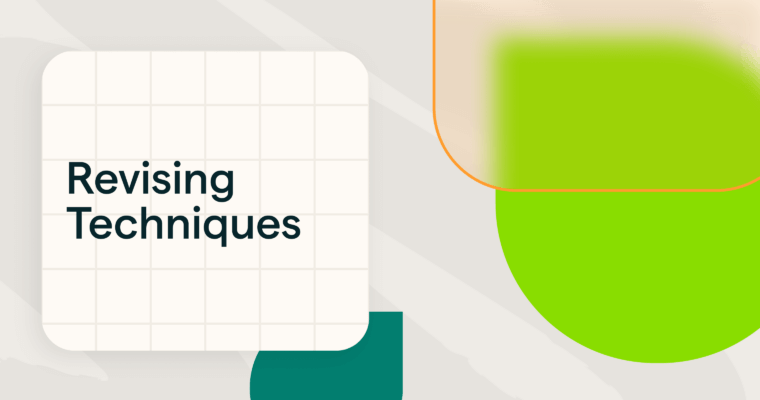
Key takeaways
- SWOT analysis helps writers evaluate their work by identifying Strengths, Weaknesses, Opportunities, and Threats.
- It improves clarity, strategy, and decision-making in every stage of writing, from brainstorming to revision.
- Writers use SWOT to pinpoint what works, what needs refinement, and which external factors may affect their success.
- Applying SWOT analysis encourages critical thinking, stronger structure, and more intentional writing.
In today’s world, writing isn’t just about putting words on a page; it’s about making smart, strategic decisions. Whether you’re drafting an academic paper, pitching a business proposal, or outlining a novel, every piece of writing benefits from clear analysis and planning.
That’s where SWOT analysis comes in. Initially used in business strategy, SWOT is a versatile thinking tool that helps writers evaluate their ideas and drafts with purpose. By organizing your thoughts into four categories—Strengths, Weaknesses, Opportunities, and Threats—you craft a balanced view of your work and a roadmap for improvement.
Table of contents
- What is SWOT analysis?
- Why use SWOT analysis in the writing process?
- How to use SWOT analysis in writing step by step
- SWOT analysis examples for writing
- Best practices for SWOT analysis in writing
- Common mistakes to avoid during SWOT analysis
- How Grammarly can support SWOT analysis
- SWOT analysis FAQs
What is SWOT analysis?
SWOT analysis is a planning tool that helps you assess a project or idea by examining four categories:
- Strengths: What is working well
- Weaknesses: What needs improvement
- Opportunities: External factors or new ideas that could improve your writing
- Threats: Challenges or constraints that could limit success
SWOT analysis originated as a business strategy in the 1960s and has since become widely used in education and communication. In writing, it helps you look at your work with objectivity. Unlike an outline, which focuses on structure, SWOT analysis helps you evaluate content and direction by clarifying your purpose, refining arguments, and improving focus.
Here is how the four parts translate for writers:
| Category | Meaning | Writing examples |
| Strengths | Internal positives | Strong thesis, clear tone, detailed examples |
| Weaknesses | Internal limitations | Repetitive phrasing, vague claims, inconsistent voice |
| Opportunities | External advantages | New research, trending topic, expanding audience |
| Threats | External challenges | Tight deadlines, competing perspectives, similar publications |
When used alongside outlining or brainstorming methods, SWOT provides a structured view of your writing so you can plan and revise strategically.
Why use SWOT analysis in the writing process?
SWOT analysis is more than a worksheet. It is a thinking framework that makes writing more intentional and balanced. Here is how it helps at every stage of the writing process.
SWOT clarifies what works and what does not
A SWOT analysis gives you a snapshot of your draft’s health.
Example: Through SWOT, a student can identify that while the thesis statement is strong, the supporting evidence is pretty weak. This helps them determine an effective solution: finding stronger sources rather than revising the thesis statement.
Why it matters: Sometimes, a writer might assume that one part of their work is the problem when, in reality, the issue is something completely different. SWOT encourages stepping back to see the big picture.
SWOT supports strategic revision
Instead of editing line by line, SWOT enables you to revise by priority.
Example: A content writer identifies that a case study section is underdeveloped but has significant potential to connect with readers. Instead of polishing its existing content, the writer expands the section to drive home its unique selling point.
Why it matters: SWOT reveals ways to improve content’s quality and impact.
SWOT encourages big-picture thinking
It pushes you to think beyond your current draft. What’s the ultimate goal for the piece?
Example: A creative writer sees an opportunity to adapt a short story into a serialized newsletter, noting its similarities to other works. Recognizing this, the writer assesses how their work can uniquely fit into their genre.
Why it matters: It helps writers think strategically about audience, trends, and purpose.
SWOT bridges brainstorming and revision
You can use SWOT before writing to test ideas or during revision to find focus.
Example: Before outlining, a researcher uses SWOT to check whether their key points align with their question. If they find low or no alignment, the researcher can revise their points or adapt their question to create a more cohesive outline.
Why it matters: It makes the writing process cyclical. Through SWOT, the writing process is both reflective and adaptive from start to finish.
How to use SWOT analysis in writing step by step
You can apply SWOT to any type of writing—academic, professional, or creative. This is because no matter what you’re writing about or the purpose of your writing, strong writing hooks the reader, logically expresses its main idea, and provides the information the reader was looking for, whether it comes in the form of an engaging novel or a clear business directive. To use SWOT effectively in your own writing, follow these six steps:
Step 1: Define your writing goal
Start by stating what you want your piece to accomplish. Why are you writing this piece? Make your goal explicitly clear.
Example: “Convince business leaders that remote work improves team productivity.”
Step 2: Identify strengths
Look for what already works in your draft or plan. What are its strongest points? Identify what makes them strong.
Example: Clear data, consistent tone, or a persuasive opening paragraph in a draft. Think about what readers are most likely to respond to—which elements in your writing are best at connecting and communicating with readers?
Step 3: Identify weaknesses
Now pinpoint areas that need improvement. Which parts of your writing are unclear or don’t logically fit into the narrative? Are there areas where the writing can be made clearer and more engaging, or simply better at communicating your point?
Example: Weak transitions, an unclear thesis, or a lack of supporting evidence are all areas that can be improved. Find these and explore ways to improve them specifically, such as reworking your thesis to use the active voice and more direct language.
Step 4: Spot opportunities
Think of untapped potential or external elements that could make your work stronger. Are there ideas you introduce but don’t continue to explore? Are there connections that can be made to other works that would strengthen readers’ understanding of yours?
Example: Adding visuals, referencing a new study, or connecting to a current event can enhance your writing.
Step 5: Recognize threats
List challenges or external risks. What other content or information might your readers already have access to that could influence how they read or respond to your piece?
Example: A similar article was just published, or a short deadline may limit depth. These are beyond your control but can have a strong impact on your work.
Step 6: Use the matrix to revise
Create a 2×2 grid and fill in each quadrant with notes. Then decide how to move forward:
- Expand opportunities and strengthen what works.
- Reduce weaknesses and plan for threats.
Example: A marketer turns “Weakness: Outdated data” into “Action: Add 2025 statistics.” The matrix helps you turn insights into action rather than guesswork. It directly addresses the problem with a targeted, appropriate solution.
SWOT analysis examples for writing
Here are three examples of SWOT analysis applied to writing in different contexts.
Academic example: Revising a research paper
Scenario: A student is improving a paper on holes in the current climate policy.
- Strengths: Clear thesis and credible data.
- Weaknesses: Uneven analysis in one section.
- Opportunities: Add a recent policy case study.
- Threats: Limited time before submission and similar published work.
Result: The student deepens their analysis and integrates new evidence to support their thesis, resulting in a stronger argument and a more engaging paper. This new evidence adds a fresh perspective to the student’s argument, and the deeper analysis provokes the reader to challenge their existing thoughts about current climate policy.
Professional example: Drafting a proposal
Scenario: A marketing manager is writing a pitch for a new campaign promoting low interest rates at a credit union.
- Strengths: Strong alignment with the credit union’s company goals, which include increasing its local customer base and providing bespoke customer service.
- Weaknesses: Repetitive structure and lack of testimonials.
- Opportunities: Add client quotes and design mockups that communicate value through real client success stories.
- Threats: Budget cuts and decision fatigue at the leadership level.
Result: The marketing manager refines the campaign’s format and makes it more persuasive by addressing leadership concerns. The new campaign meets prospective borrowers exactly where they are, positioning the credit union as a financial partner.
Creative example: Planning a short story
Scenario: A writer is writing a science-fiction short story for a contest. The short story is about a middle-aged divorcee who finds love with an AI-generated boyfriend and discovers parts of herself she’d previously repressed.
- Strengths: Unique concept and vivid imagery.
- Weaknesses: Slow pacing and unclear ending.
- Opportunities: Add dialogue and tension earlier to build the stakes and reader buy-in.
- Threats: Tight deadline and competition with similar themes.
Result: SWOT helps the writer plan revisions before drafting, leading to a more focused and engaging story that they can complete and submit ahead of the deadline. This focus makes their story stand out among the competition despite similar themes from multiple participants.
Best practices for SWOT analysis in writing
To get the most from SWOT, use it regularly and strategically.
- Be specific in each quadrant. Use clear notes such as “unsupported claim” instead of vague phrases like “needs work.”
- Use SWOT more than once. Apply it when brainstorming, outlining, and revising your work to track progress.
- Combine with other tools. Follow your SWOT with an outline or mind map to organize your ideas visually.
- Ask for feedback. Have a peer or mentor review your SWOT insights to catch blind spots.
- Use a template or chart. A 2×2 matrix makes patterns easier to see and turn into actions.
- Adapt the process. Whether you write solo or collaboratively, tailor the approach to your workflow.
Common mistakes to avoid during SWOT analysis
- Being too vague. Use specific language that points to concrete fixes, like “add two more supporting points to the opening paragraph” instead of “make the opening stronger.”
- Ignoring opportunities and threats. Do not stop at internal issues; external context matters too. Think about how you want your writing to be received by its audience. How can you deliver something that exceeds their expectations and minimizes risks?
- Treating it as a one-time task. The best results come from revisiting SWOT at multiple stages of the writing process. This is because new challenges can arise between stages, and often fixing a problem early prevents it from becoming a bigger problem later.
- Not applying your findings. Use your insights to guide editing decisions. You found clear, actionable insights—use them to your advantage.
- Overthinking. Keep it simple—capture key points and move forward. Ruminating over the process wastes the time you could spend writing a stronger draft or creating a publishable final version.
How Grammarly can support your SWOT analysis
SWOT analysis helps you assess your writing from every angle. Grammarly’s tools make it easier to act on your insights.
- Use Expert Review to evaluate strengths and weaknesses through detailed feedback.
- Apply Reader Reactions to see how your work resonates with audiences.
- During brainstorming, Grammarly’s AI writing tools can help you generate new ideas for the “Opportunities” section.
- When revising, Grammarly identifies unclear phrasing, tone mismatches, and inconsistencies so you can fix them efficiently.
Together, SWOT and Grammarly provide a structured path from analysis to execution, helping you write with purpose and confidence.
SWOT analysis FAQs
What is the purpose of SWOT analysis in writing?
It helps writers evaluate their work critically by identifying strengths, weaknesses, opportunities, and threats, thereby improving structure and clarity.
Can SWOT analysis replace an outline?
No, but it complements one by revealing what to include, expand, or adjust before you start outlining.
Is SWOT only for academic writing?
Not at all. It is equally valuable for business, creative, and personal writing.
How does SWOT compare to brainstorming?
Brainstorming generates ideas, while SWOT organizes and evaluates them with strategy in mind.
When should I use SWOT analysis?
Use it during brainstorming, outlining, or revision to keep your writing focused and goal-oriented.






